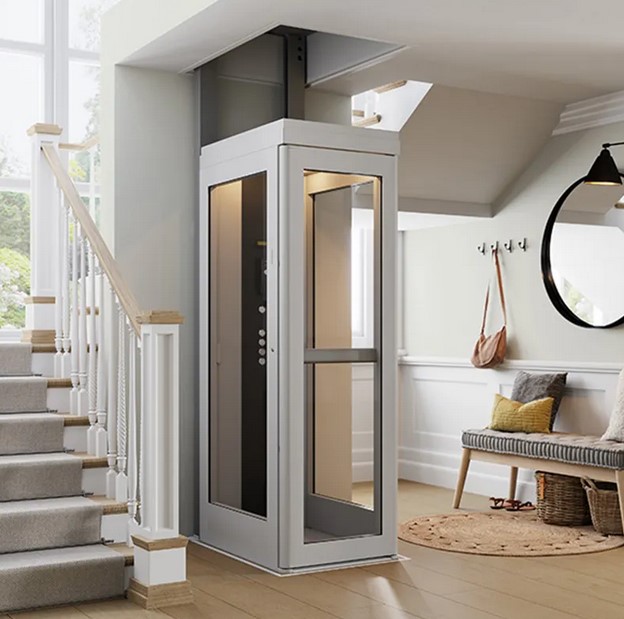London Lift Company: Giving Comprehensive Lift Solutions Throughout the Resources
London Lift Company: Giving Comprehensive Lift Solutions Throughout the Resources
Blog Article
Exploring the Globe of Elevators: Typical Problems Encountered by Numerous Lift Devices
As we browse via the vertical transportation systems of modern buildings, lifts stand out as an essential component of our daily lives. From hydraulic elevators to grip systems and machine-room-less styles, each lift kind comes with its set of common issues.
Hydraulic Elevators
Hydraulic elevators, often chosen for low-rise structures, make use of fluid stress to regulate the motion of the elevator car (lift repair companies). This device entails a hydraulic pump pushing oil into a cylinder, triggering the lift to relocate the wanted direction. While hydraulic elevators are known for their peaceful and smooth procedure, they do feature their own set of typical concerns
One prevalent problem with hydraulic elevators is oil leakage. The seals in the hydraulic system can wear in time, bring about oil seepage. If left unaddressed, this not only creates a mess but can also affect the elevator's performance. Furthermore, problems with the control system, such as defective shutoffs or a malfunctioning pump, can create interruptions in the lift's movement.
Regular upkeep and timely fixings are vital to guarantee the smooth functioning of hydraulic lifts. By resolving these typical problems proactively, building owners can minimize downtime and guarantee the safety and security and performance of their upright transport system.
Grip Lifts
When taking into consideration upright transportation systems in buildings, one more common type besides hydraulic lifts is the grip elevator. Traction elevators operate utilizing a system of ropes and counterweights that move the elevator auto by gripping onto the hoist ropes. This mechanism enables smoother and quicker upright transportation compared to hydraulic systems.
Among the typical problems faced by grip elevators is rope wear. The continuous activity of the ropes within the traction system can result in tear and use gradually, possibly creating the lift to breakdown or end up being dangerous for use. Regular evaluations and upkeep of the ropes are important to ensure the lift's proper functioning and safety.
One more concern that traction lifts might come across is associated with the control system. Issues with the control system can bring about problems such as irregular movement, hold-ups in response times, and even complete closures. Regular screening and maintenance of the control system are important to avoid such issues and make certain the elevator's integrity.
Machine-Room-Less (MRL) Elevators

One of the vital elements of MRL elevators is the compact gearless grip maker that is set up within the hoistway. This device efficiently drives the elevator car without the demand for cumbersome devices discovered in conventional grip lifts. In addition, MRL lifts commonly make use of a weight system to stabilize the automobile, further enhancing their power effectiveness.
Despite their benefits, MRL lifts might face obstacles related to repair and maintenance because of the restricted space for look at this website devices installment. Access for servicing parts within the shaft can be limited, calling for specialized training for professionals. Correct maintenance timetables and regular examinations are vital to make sure the continued smooth read the full info here procedure of MRL elevators.
Overloading and Weight Restriction Issues
Overwhelming and weight limitation problems are important worries in lift operations. Elevator producers style lifts with specific weight capacities to guarantee traveler safety and security and tools longevity.
When elevators are overloaded, it places too much pressure on the electric motor, wires, and various other components, potentially creating breakdowns or breakdowns. If they identify excess weight, safety mechanisms such as sensing units and overload sensors are in area to protect against lifts from moving. Additionally, exceeding weight limits can lead to increased energy consumption and wear and tear on the elevator system.
To alleviate overloading issues, building managers should prominently show weight limitations in lifts and enlighten occupants on the importance of adhering to these limitations - lift repair companies. Routine maintenance checks by qualified service technicians can likewise aid make certain that elevators are operating within risk-free weight parameters. By dealing with overloading and weight limitation concerns proactively, structure proprietors can boost elevator safety and efficiency
Electrical System Failures
Exceeding weight limits in elevators can not only lead to mechanical concerns however additionally possibly add to electric system failings within the lift facilities. Electrical system failings are a critical issue in lift operation, as they can cause unexpected closures, malfunctions, or perhaps safety risks. One typical electric problem is the overheating of components as a result of excessive current flow triggered by straining the lift click over here past its ability. This can lead to damage to the electric motor, control, or wiring systems, causing costly repair services and downtime.
Normal upkeep and assessments are important to recognize and deal with possible electric issues promptly, making certain the effective and risk-free operation of elevator systems. By adhering to weight limits and conducting routine electrical system checks, building owners can mitigate the danger of electrical failures in elevators.
Final Thought

Hydraulic lifts, typically liked for low-rise structures, utilize fluid pressure to manage the motion of the lift vehicle.When taking into consideration vertical transport systems in buildings, an additional common type aside from hydraulic elevators is the grip lift. Grip elevators run utilizing a system of ropes and counterweights that relocate the elevator vehicle by gripping onto the hoist ropes. Unlike typical elevators that require a separate equipment area to house the devices, MRL elevators incorporate most of the components within the shaft, getting rid of the requirement for a devoted device room.In verdict, elevators encounter typical issues such as hydraulic breakdowns, traction system failings, and electrical system troubles.
Report this page